Futures surge; Trump on China trade tensions - what’s moving markets
Introduction & Market Context
Chevron Corporation (NYSE:CVX) reported first-quarter 2025 earnings of $3.5 billion, or $2.00 per diluted share, according to the company’s earnings presentation released on May 2, 2025. On an adjusted basis, earnings were $3.8 billion, or $2.18 per diluted share. The oil giant’s shares were trading down 2% in premarket trading following the release, with the stock closing at $136.26 on May 1.
The company maintained stable production despite ongoing portfolio reshaping, with significant growth from its Tengizchevroil (TCO) project helping to offset the impact of recent asset sales in Canada, Alaska, Congo, and East Texas.
Quarterly Performance Highlights
Chevron generated $5.2 billion in cash flow from operations during the first quarter, which increases to $7.6 billion when excluding working capital effects. The company reported total capital expenditures of $3.9 billion, with organic capex accounting for $3.5 billion of that total.
As shown in the following financial highlights slide, Chevron delivered a return on capital employed (ROCE) of 8.3%, or 9.0% on an adjusted basis:
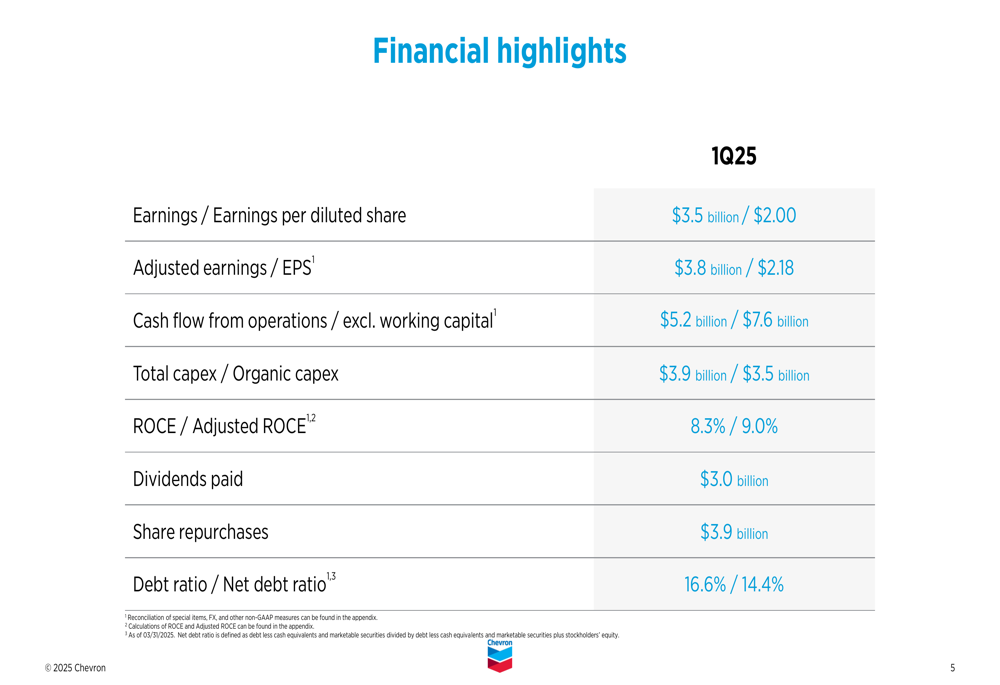
The company continued its strong shareholder returns program, paying $3.0 billion in dividends and repurchasing $3.9 billion in shares during the quarter. This commitment to shareholder returns is a central element of Chevron’s financial strategy, as illustrated in their consistent financial priorities slide:

Production and Operations
Worldwide net oil and gas production remained virtually unchanged at 3,353 thousand barrels of oil equivalent per day (MBOED) in Q1 2025, compared to 3,350 MBOED in Q4 2024. This stability masks significant underlying changes, as growth from TCO (+100 MBOED) and Gulf of America projects (+20 MBOED) offset declines from asset sales (-105 MBOED) and other factors.
The following chart illustrates these production dynamics:
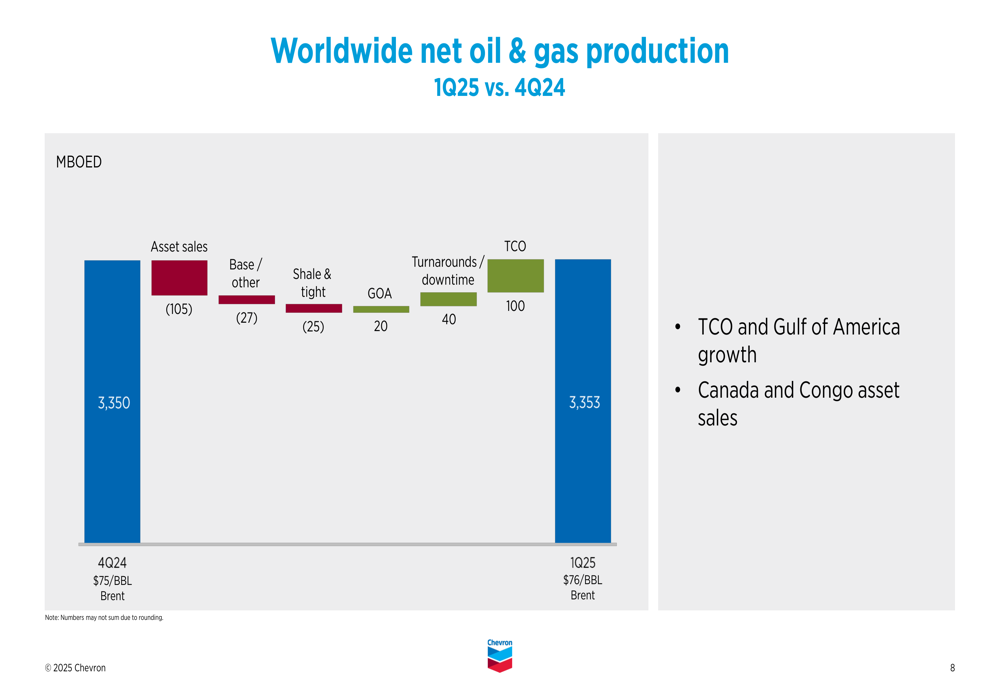
A key operational highlight was the successful 30-day ramp-up of the TCO project, which added approximately 1 million barrels of oil equivalent per day. The company also noted progress on Gulf of America projects including Anchor, Whale, and Ballymore, as well as a 45% capacity increase at the Pasadena Refinery through LTO expansion.
As shown in the execution highlights slide, Chevron is actively managing its portfolio while bringing new projects online:
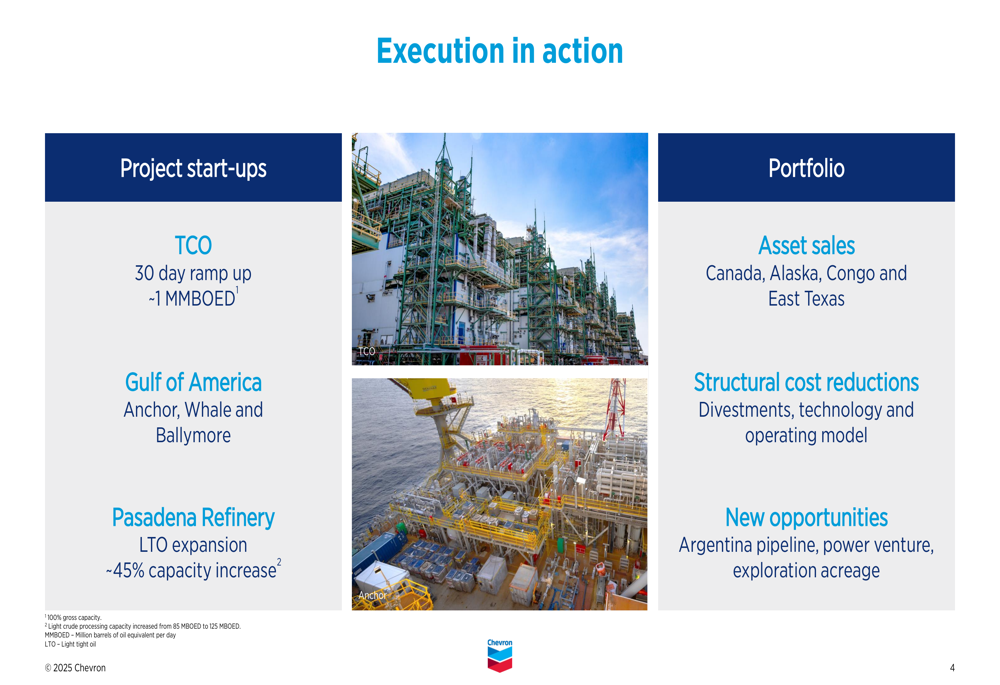
Cash Flow and Capital Allocation
Chevron’s cash balance decreased from $6.8 billion at year-end 2024 to $4.6 billion at the end of Q1 2025. This reduction reflects significant cash outflows, including $3.9 billion for share repurchases, $3.0 billion for dividends, and $2.2 billion for Hess (NYSE:HES) shares, partially offset by new debt of $5.0 billion and asset sales of $0.7 billion.
The company’s free cash flow excluding working capital was $3.7 billion, as illustrated in this waterfall chart:
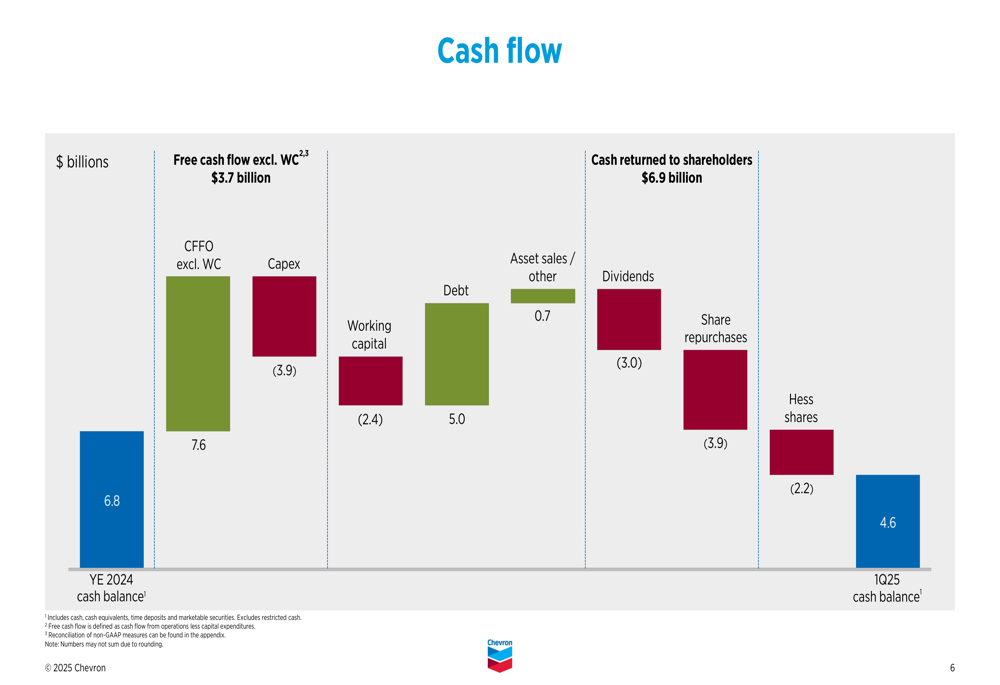
Chevron maintained a strong balance sheet with a debt ratio of 16.6% and a net debt ratio of 14.4%, positioning the company well relative to industry peers and the broader market.
Strategic Initiatives
Chevron emphasized its focus on "winning in any environment" through four key strategic pillars: shareholder returns, a resilient portfolio, cost and capital discipline, and cash flow growth.
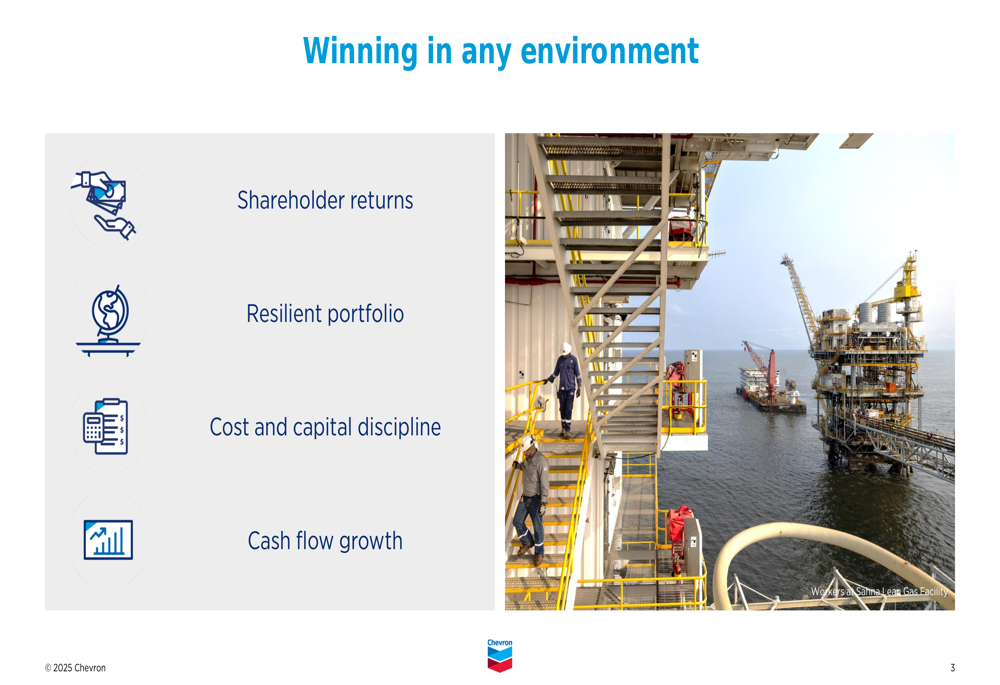
The company’s portfolio reshaping continued with asset sales in Canada, Alaska, Congo, and East Texas, while simultaneously pursuing new opportunities in Argentina pipeline development, power ventures, and exploration acreage. Chevron also highlighted structural cost reductions through divestments, technology implementation, and operating model improvements.
Forward-Looking Statements
Looking ahead to Q2 2025, Chevron expects turnarounds and downtime to impact production by approximately 105 MBOED. The downstream segment anticipates turnaround impacts of $300-350 million on earnings. The company projects affiliate dividends of $800-900 million and share repurchases of $2.5-3.0 billion for the second quarter.
A significant focus of forward guidance was the TCO project, which is expected to generate substantial free cash flow in the second half of 2025 and into 2026. Based on a $70/BBL Brent price assumption, TCO is projected to provide significant cash available for dividends after fixed loan repayments:
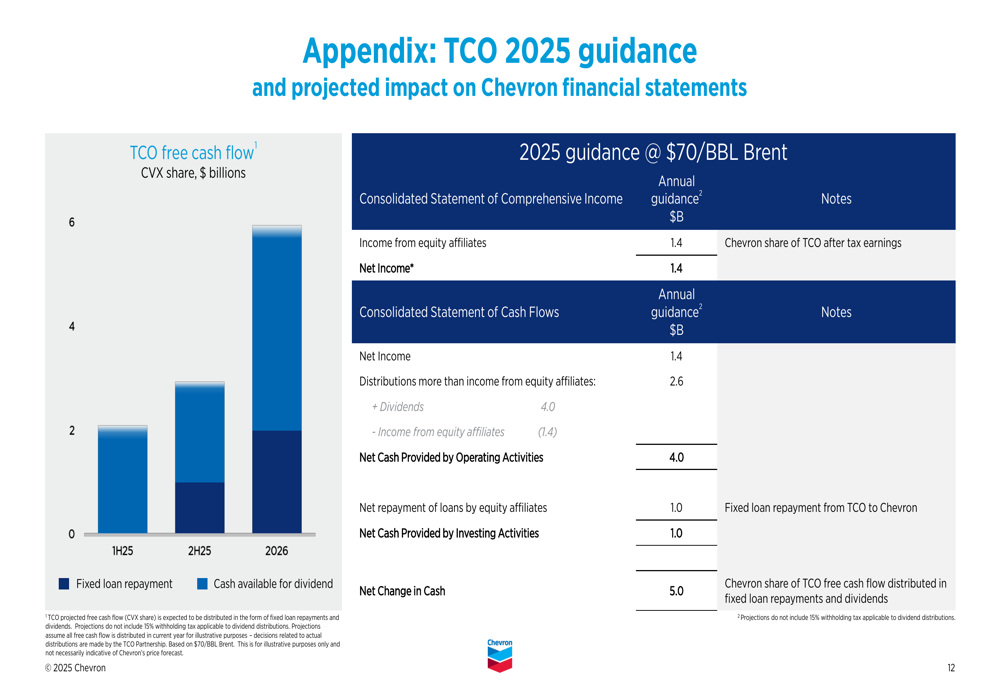
The earnings bridge from Q4 2024 to Q1 2025 provides insight into the factors affecting Chevron’s financial performance, with notable impacts from special items, foreign exchange, and timing effects:
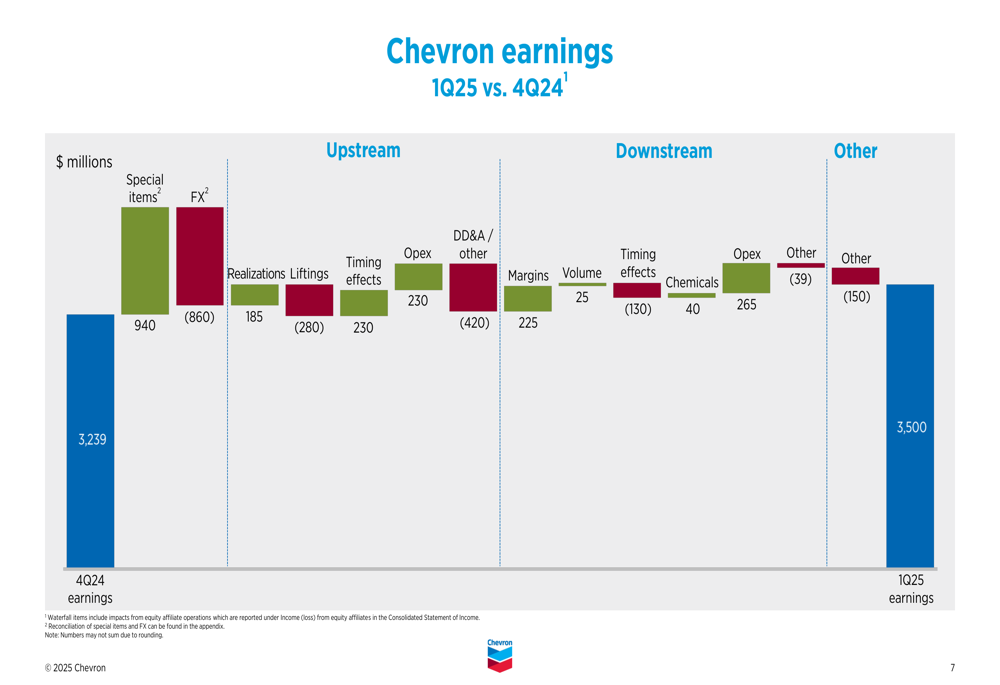
Chevron’s presentation demonstrates the company’s continued focus on balancing production stability, portfolio optimization, and shareholder returns in a dynamic energy market environment. While asset sales have reduced the company’s footprint in certain regions, growth from major projects like TCO is helping to maintain overall production levels while positioning the company for future cash flow growth.
Full presentation:
This article was generated with the support of AI and reviewed by an editor. For more information see our T&C.
